When I shared this month's Education in Motion spokes topic with a colleague (himself an unapologetic power wheelchair geek), his response was, "That sounds painful."
I am undeterred. Stay with me for a few paragraphs.
Spokes act as the bridge between a wheelchair user and the ground. Understanding their mechanics and what makes one type different from another, enables informed choices for the best performance and use of budget resources.
How spokes work in a wheelchair wheel
Spokes need to be under tension to hold a weight, much like a rope. As the wheels turn, the bottom spokes become compressed and the upper spokes are stretched. In order for the system to work, the spokes need to keep enough tension so that they are still a little stretched, even under compression. Otherwise they would break, bending the wheel rim.
At the end of each spoke, there is a "nipple" where it meets the rim. Turning the nipple tightens the spoke -- that is, it increases the tension on that spoke.
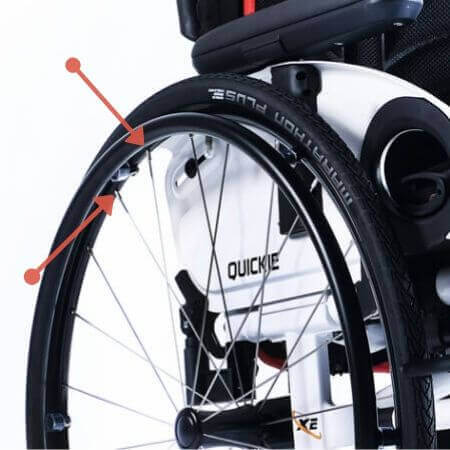
Spokes attach on the outside of the hub. For those brand new to wheelchair mechanics, the hub is the metal cylinder at the center of the wheel which the axle goes through.
However, the spokes line up one directly behind the other where they terminate in the middle of the wheel rim. This creates a 'V' shape when observed straight-on. Tightening the right side spoke pulls the rim towards the right a tiny amount, and tightening the left side pulls it to the left. Careful adjustment allows the rim to be set to a true middle position for the most efficient propulsion and tracking of a wheelchair.
Differences in spoke options for manual wheelchair users
Cross-pattern metal spokes
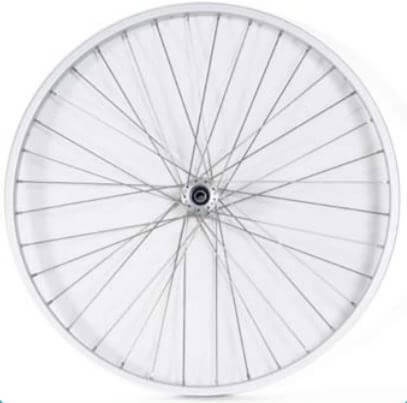
Installing ("lacing") spokes in a cross pattern increases the strength of a wheel, particularly against twisting forces. It is a well-established spoke option because it meets moderate to high durability needs at low cost. Cross-pattern metal spokes are often a default rear wheel option on wheelchairs.
Radial spokes
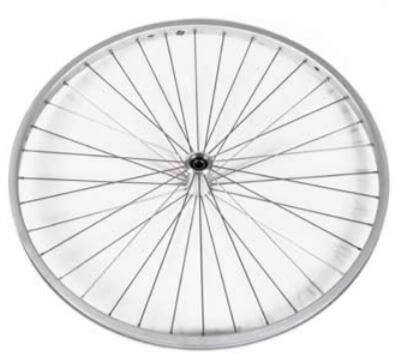
Radial style radial spokes have a minimalistic aesthetic, and are lighter. The compromise is that they are not as durable as the cross-spoked version, reflected in a lower user weight capacity.
Lightweight and super lightweight spokes
Lightweight and super lightweight spoked wheels also have a radial style, but have also been designed with componentry throughout to reduce weight. They are the lightest option, making them easy to lift and maneuver, so are often a good choice for frequent lifting in and out of a car. These are a higher cost option, and are necessarily not quite as robust as heavier wheels, much like ultra lightweight racing bicycle wheels.
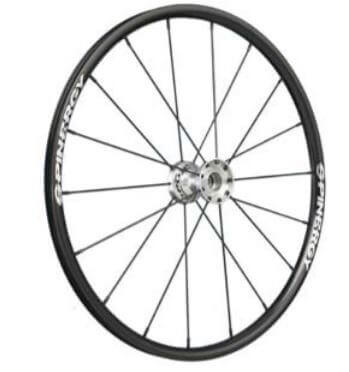
Some spokes, like those in a Spinergy wheel, use a semi-flexible fiber material and upgraded hub design for high durability and increased comfort. Aesthetically, they offer colored spoke options and fewer spokes are required to maintain the wheel's structure. While not quite as light as the super lightweight spoked wheels, they are lighter than standard steel universal cross-spoked wheels.
These wheels have a more expensive manufacturing process than metal spoked wheels, and therefore are a premium options on active user wheelchairs. Due to their durability, they are a popular upgrade for active clients and those who put their wheelchair through heavy use.
Mag wheel spokes
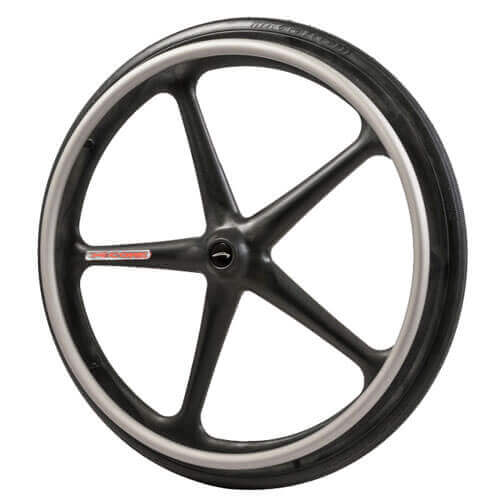
Individuals who use wheelchairs and their caregivers can be attracted to mag wheels because they require much less maintenance and the spokes are made from stronger material. However, mag wheels can be heavy and flex in large diameter wheels intended for independent propulsion.
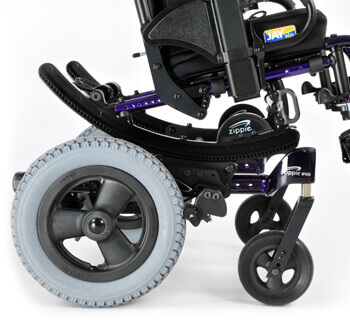
Mag wheels do work very well in small transit wheels. For example, the QUICKIE IRIS tilt-in-space wheelchair uses mag wheels so carers and family members can use the wheelchair confidently over a variety of surfaces.
References
- Hughes B, Sawatzky BJ, Hol AT. A comparison of spinergy versus standard steel-spoke wheelchair wheels. Arch Phys Med Rehabil 2005;86(3):596-601.
- Vorrink, S. N. W., Van der Woude, L. H. V., Messenberg, A., Cripton, P. A., Hughes, B. & Sawatzky, B. J., In: Journal of Rehabilitation Research and Development (2008). 45, 9, p. 1269-80 12 p.
- Carmen D. RESNA Position on the Application of Ultralight Manual Wheelchairs [PDF]. (2012, March 27) Retrieved from URL https://www.resna.org/sites/default/files/legacy/resources/position-papers/UltraLightweightManualWheelchairs.pdf
Faith Brown, Occupational Therapist (OT), Clinical Specialist - Sunrise Medical UK & Éire, is an HCPC registered Occupational Therapist with a postgraduate certificate in Postural Management for People with Complex Disabilities from Oxford Brookes University. She is a member of PMG (Posture and Mobility Group).